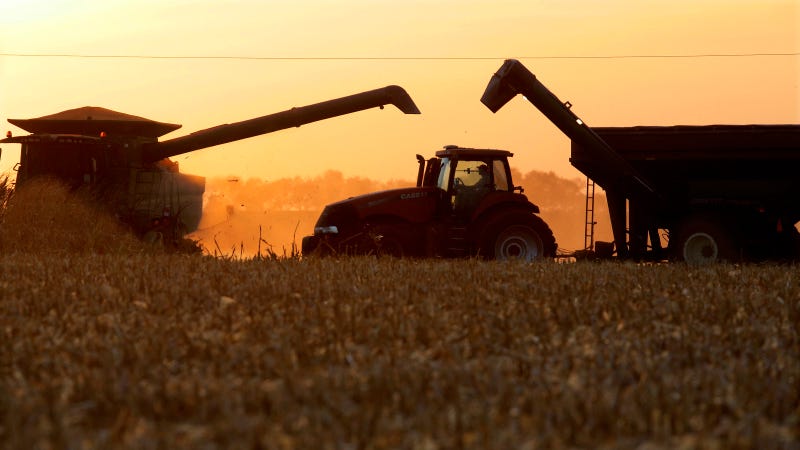 Image: AP
Image: AP
Back on a crisp January day in 2016, I slipped around on a frozen lake in Wisconsin to ask a bunch of portly men in grey hoodies and trucker hats how the fishing had been compared to when they were kids. Secretly, I wanted to know what they thought about the changing climate. The men had various backgrounds, many of them in agriculture, and nearly all noticed fewer ice fishing days than when they were kids. They detailed their thoughts in gruff what-is-this-kid-doing-here Wisconsin accents from folding chairs beside flopping future fillets.
I bring this up because farmers have noticed the climate is different from what it used to be, even though a study of farmers in Iowa found that a majority (as of 2015) of farmers don’t beileve it’s from human activity. Scientists, on the other hand, are almost all in agreement that climate change is human-driven. But a new study shows that farming could be influencing the climate in ways other than cow farts and fertilizer contributing to global warming. What about how the move from horse farming to mechanized agriculture changed things?
A model presented to the General Assembly of the European Geosciences Union in Vienna, Austria details how changing Midwestern land use could have lead to more rainfall. “We did one run [with] 1940s agricultural land use data, and a run where we had 2010 current land use,” Taleena Sines from the International Centre for Theoretical Physics in Trieste, Italy told Gizmodo. “The land use from 2010 in our projection causes higher frequency of extreme precipitation events.”
The model attempts to document climate change not from greenhouse gases, but instead, from crop cover changes associated with the move from horses to mechanized plows. Mechanization meant farmers needed to plant fewer oats to feed their horses, and soon devoted much of the previously oat-covered land to planting soybeans instead, reports Eos. The new model combined data from the Weather Service and county-level crop breakdowns across the Midwest and prairie states to determine and track mesoscale convective complexes—the systems that bring heavy rains and storms to tornado alley. According to Eos reporting, the researchers found that the number of days with more than 50 millimeters of rain (essentially, moderate rain all day or a violent storm) increased by 10 to 20 percent.
That corresponds to observations of increasing rainfall in the region, according to a study cited by Eos.
It’s important to note that this study is just a single model of how one thing might affect something else. “You can’t take a model at face value,” said Sines. “They are computer representations of the real world, so it’s always good to keep in mind the limitations.” And of course, our world is an incredibly complex system, with climate forcing coming from the sun, greenhouse gas emissions, and plenty of other factors in one hyper complex system. This study doesn’t negate the other climate drivers either, like greenhouse gases.
So, why even write a story about it? Because science is interesting, we’re measly humans and we still might be changing out world in ways we didn’t even think about. No one is trying to get you hyped up or upset or angry. Sines just wants you to consider science’s power.
“One of the things that I’m passionate about, especially with how things are going policy-wise today, is just for people to have an open mind about science,” she said. “We don’t know everything there is to know, and there’s always room to learn more about it.”